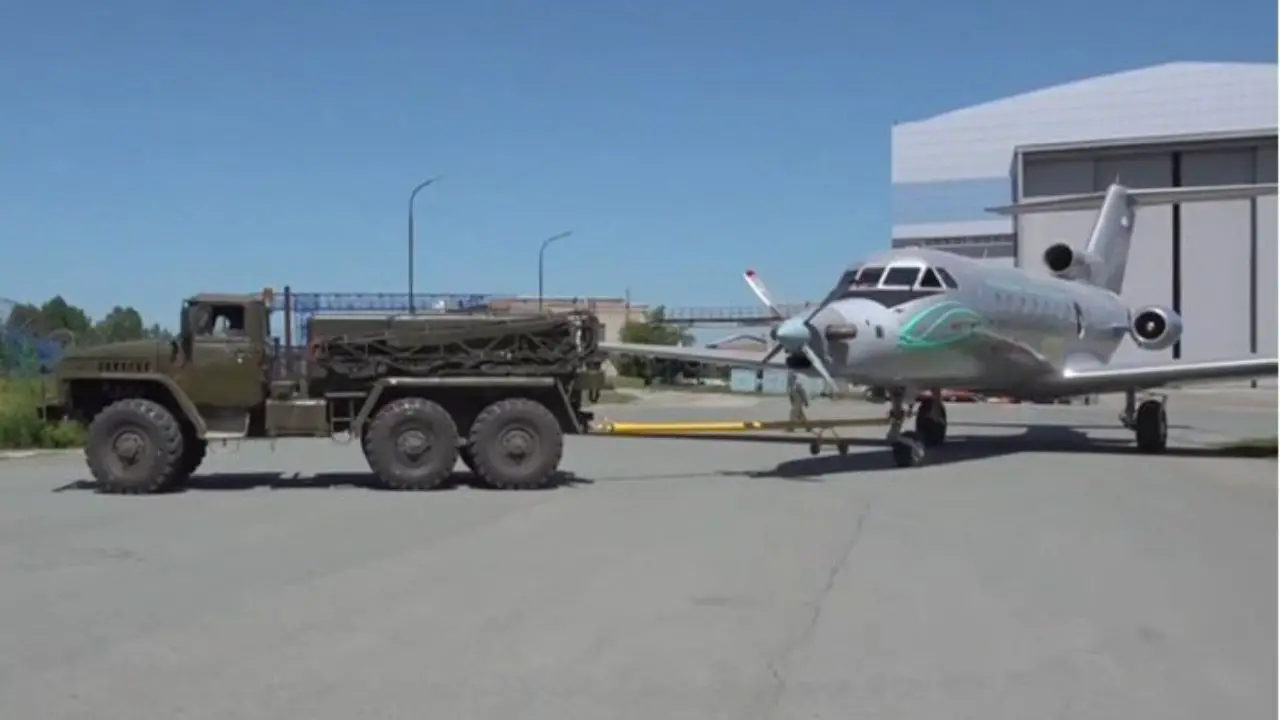The new Russian turboprop engine VK-800 is presently undergoing extensive testing at the S. A. Chaplygin Siberian Scientific Research Institute of Aviation (SibNIA). This engine is being developed to power prospective domestic light and medium aviation aircraft, thereby demonstrating a significant advancement in the modernization of Russia’s aviation industry.
The Testing Program’s Objectives and Progress
The Yak-40 flying laboratory has successfully completed its initial runs and short flights with the prototype engine mounted as part of the VK-800 engine certification program. These initial tests are essential for the collection of data regarding the engine’s reliability and efficacy in actual flight conditions. The present phase is dedicated to the preparation of the engine for the complete certification testing process, which will necessitate a comprehensive series of flight tests to verify the engine’s operational stability, safety, and readiness for serial production. These procedures guarantee that the VK-800 satisfies all regulatory requirements and can be seamlessly integrated into future aircraft.
Development and Potential Applications
JSC “Ural Civil Aviation Plant” is currently in the process of developing the VK-800 engine in accordance with a contract with the Ministry of Industry and Trade of the Russian Federation. This power plant is designed for a diverse array of applications within the aviation sector of Russia. The light multipurpose aircraft LMS-901 “Baikal,” the training aircraft UTS-800, and the Russian-Belarusian regional aircraft LMS-192 “Osvey” are among the main types that are expected for use with the VK-800. Furthermore, the VK-800 will be used to remotorize localized versions of the L-410 aircraft. The engine is a versatile choice for various types of aircraft, as its maximal power output ranges from 807 to 877 horsepower, depending on the specific requirements and application.
SibNIA’s Technical and Testing Capabilities
SibNIA is equipped with a modern and comprehensive infrastructure that enables the thorough testing of aviation components and systems. The institute maintains robust test stands that are specifically engineered for static, endurance, and dynamic ground testing. These tests are crucial for the assessment of engine performance and durability in various environments. SibNIA operates numerous flight laboratories, including the L-29, TVS-2MS, Yak-40, Tu-134, and Mi-8, in addition to ground testing. Engineers are able to evaluate the engine’s performance in actual operational environments by utilizing specialized equipment to conduct comprehensive flight tests on these flying platforms. The certification process is considerably expedited, and the introduction of new aviation technologies is facilitated by this full-cycle testing capability, which includes ground tests and flight trials.
The VK-800 Project’s Strategic Significance
The VK-800 engine is not a wholly new design; rather, it is a derivative of the VK-800B turboshaft engine, which was first created for helicopters by the FSUE Plant in St. Petersburg, which was named after Klimov. The VK-800 project began as a helicopter engine that was designed to replace the PW-207K engine, which was manufactured abroad and used in Ansat helicopters. In the early 2000s, the VK-800V (helicopter version) underwent laboratory testing and development.
The VK-800 initiative is a critical component of the modernization and development of Russian regional and light aviation. It is also essential in the nation’s endeavors to decrease its reliance on foreign-made engines by offering a domestically developed powerplant. The VK-800’s successful serial production will bolster the technological independence of Russia’s aircraft manufacturing industry by supporting numerous domestic and collaborative aviation programs. This engine is anticipated to become a critical element in the development of a new generation of Russian aircraft, thereby enhancing the competitiveness and expansion of the national aviation sector.
International Engines
The VK-800 engine is internationally equivalent to the GE (formerly Walter) M601 and H80 series turboprop engines. These engines are commonly found in aircraft, including the L-410, which is a primary objective for the re-engineering of the VK-800 in Russia. The VK-800S is comparable to or marginally superior to its international counterparts in terms of technical parameters. The VK-800S is intended to be more fuel-efficient and lighter than the M601 and H80, with a time between overhauls (TBO) that is comparable or superior.
Russian-assembled L-410 aircraft and other comparable platforms were previously powered by the GE Aviation Czech M601 and H80 engines, which were originally developed by Walter and subsequently acquired by GE. This was prior to the VK-800 aircraft. For an extended period, these engines were the norm for regional and utility aircraft in Russia.
The Pratt & Whitney Canada PT6, which is widely used on comparable aircraft worldwide, is another international engine in this category.
Future Plans and Next Steps
The next phase entails the execution of a comprehensive series of flight tests after the successful fulfillment of the initial runs and short flights. These evaluations will serve to further illustrate the engine’s reliability, safety, and performance in various flight conditions. The results of these trials will heavily influence the final decision to proceed with serial production of the VK-800 engine. This milestone will facilitate the integration of the VK-800 into multiple aircraft platforms and enhance Russia’s aviation capabilities by transitioning from development and testing to full-scale manufacturing.
Official Website of Youtube Channel – Altitude Addicts
